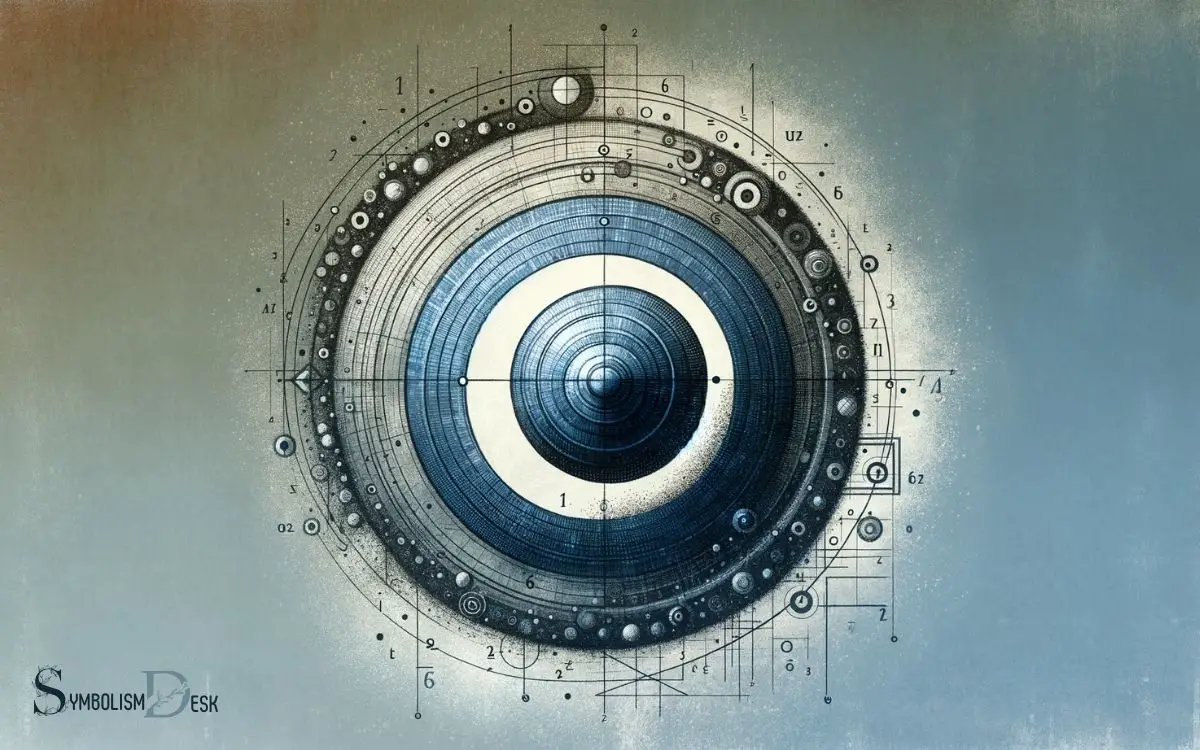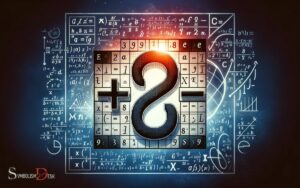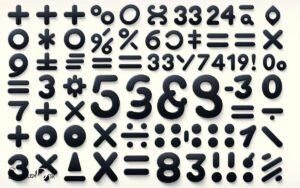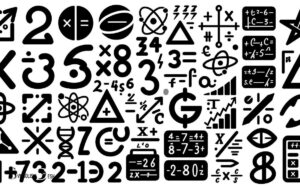Discrete Math Symbols for Sets: Operations!
In discrete mathematics, symbols are used to represent sets and operations on them concisely.
Common set symbols include:
- Universal set (U or E): The set containing all elements considered in a particular discussion.
- Empty set (∅): A set with no elements.
- Element of (∈): Indicates that an element is a member of a set.
- Not an element of (∉): Indicates that an element is not a member of a set.
- Subset (⊆): Signifies that all elements of one set are contained within another set.
- Proper subset (⊂): Indicates a subset that is not equal to the containing set.
- Union (∪): The set of all elements that are in either of two sets.
- Intersection (∩): The set of all elements that are common to two sets.
- Set difference (− or ): The set of elements in one set but not in another.
- Complement (A’): The set of all elements not in set A, relative to the universal set.
- Cartesian product (×): The set of all ordered pairs from two sets.
These symbols form the basis for set notation and operations in discrete mathematics. Set theory is a foundational aspect of discrete math, where sets are collections of distinct objects. Symbols help to express complex ideas efficiently.
For example:
- U represents the grand set containing all possible elements.
- ∅ denotes the absence of any elements.
- A ⊆ B implies every member of set A is also in B.
- A ∪ B combines all unique elements from both A and B.

Key Takeaway
Set Notation Basics
Set notation provides a concise and precise way to symbolically represent collections of elements. A set is denoted by curly braces, and its elements are listed inside, separated by commas.
For instance, a set of even numbers less than 10 can be represented as {2, 4, 6, 8}. The symbol ∈ denotes “in,” so if we have a set A = {1, 2, 3}, then 2 ∈ A, meaning “2 is in the set A.”
On the other hand, the symbol ∉ denotes “not in,” so if B = {4, 5, 6}, then 2 ∉ B, meaning “2 is not in the set B.”
Understanding these basic set notations is fundamental for grasping more advanced concepts in discrete mathematics and various other fields.
Union and Intersection Symbols
Discussing the union and intersection symbols is essential for understanding the relationships between sets in discrete mathematics. The union of two sets, denoted by the symbol ∪, represents the combination of all elements from both sets, without repetition.
For example, if set A = {1, 2, 3} and set B = {3, 4, 5}, then A ∪ B = {1, 2, 3, 4, 5}. On the other hand, the intersection of two sets, denoted by the symbol ∩, represents the elements that are common to both sets.
Using the same sets A and B as before, A ∩ B = {3}. These symbols play a crucial role in various mathematical operations and are fundamental for solving problems in discrete mathematics, making them essential for a comprehensive understanding of set theory.
Subset and Superset Representations
The concept of subsets and supersets is fundamental in discrete mathematics, as it allows for the comparison and categorization of sets.
Proper subset notation, denoted by the symbol “⊂”, signifies that one set is strictly contained within another.
Conversely, the superset symbol “⊃” represents a set that contains all the elements of another set. Understanding the subset and superset relationship is crucial for various mathematical applications and logical reasoning.
Proper Subset Notation
An important notation in discrete math is the representation of proper subsets, which is crucial for understanding the relationships between sets.
A proper subset is a subset that contains some, but not all, of the elements of another set. In set theory, the symbol used to represent a proper subset is “⊂”.
For example, if set A = {1, 2} and set B = {1, 2, 3}, then A is a proper subset of B, denoted as A ⊂ B. This indicates that A contains some elements of B, but not all. It’s important to note that the empty set (∅) is a proper subset of every set.
Understanding proper subset notation is essential for accurately representing relationships between sets and is fundamental in various discrete math concepts and applications.
Superset Symbol Representation
The symbol used to represent a superset in set theory is ‘⊃’, indicating that one set contains all the elements of another set, as a starting point for our discussion on superset symbol representation.
In set notation, if set A contains every element of set B, including possibly some additional elements, then A is considered a superset of B.
This relationship is denoted as A ⊃ B. The superset symbol ‘⊃’ is similar to the subset symbol ‘⊂’, but it represents the inverse relationship.
Understanding superset notation is crucial in various mathematical and computational contexts, as it allows for the comparison and manipulation of sets in a precise and concise manner.
This notation is fundamental in discrete mathematics and forms the basis for more complex set operations and theories.
Subset/Superset Relationship
Representation of the subset/superset relationship in set theory is crucial for understanding the containment of elements within sets.
Building on the discussion of the superset symbol ‘⊃’, we now delve into the various representations of subsets and supersets in discrete mathematics.
| Representation | Meaning |
|---|---|
| A ⊆ B | A is a subset of B |
| B ⊇ A | B is a superset of A |
| A ⊂ B | A is a proper subset of B |
In the table above, ‘A ⊆ B’ denotes that set A is a subset of set B, implying that every element of A is also an element of B.
Similarly, ‘B ⊇ A’ indicates that B is a superset of A, signifying that B contains all elements of A. The notation ‘A ⊂ B’ signifies that A is a proper subset of B, meaning A is a subset of B but not equal to B.
Understanding these representations is fundamental when working with sets in discrete mathematics.
Complement and Power Set Notations
In the realm of discrete math symbols for sets, the concept of complement and power set notations holds crucial significance.
Complement notation provides a means to express the elements not included in a given set, while power set notation enables the representation of all possible subsets of a set.
Understanding these notations is essential for performing set operations involving complements and power sets.
Complement Notation Explained
When discussing sets in discrete math, it is important to understand the complement notation, which represents the elements not in a given set. The complement of a set A, denoted as A’, consists of all the elements that are not in set A within the universal set.
This can be represented as A’ = {x | x is in the universal set but not in A}. The complement notation is a fundamental concept in set theory and is crucial for various operations and proofs in discrete math.
Understanding complements allows for the comparison and manipulation of sets, contributing to the broader comprehension of set theory.
Representing Power Sets
The representation of power sets in discrete math involves the use of complement and power set notations.
When representing power sets, it is important to consider the following:
- Complement Notation: This involves denoting the complement of a set, often represented as A’, Ā, or complement(A).
- Power Set Notation: Denoted as P(S) or 2^S, it represents the set of all subsets of a given set S.
- Cardinality: The power set of a set with n elements contains 2^n elements.
- Set Operations: Power sets are essential for various set operations such as unions, intersections, and differences.
Understanding these notations and concepts is crucial for effectively working with power sets in discrete mathematics.
Set Operations With Complements
To understand set operations with complements, one must grasp the usage of complement and power set notations in discrete mathematics. Complement notation is denoted by A’ or Ā and refers to all elements not in set A within the universal set.
The power set, denoted as P(A), represents the set of all subsets of A, including A itself and the empty set.
The following table provides a summary of these notations:
| Notation | Description |
|---|---|
| A’ or Ā | Complement of set A |
| P(A) | Power set of set A |
Understanding these notations is essential for performing set operations with complements, such as intersection, union, and relative complement. These operations are crucial for various applications in discrete mathematics.
Cardinality and Element Membership
As we delve into the topic of cardinality and element membership in discrete math symbols for sets, it is essential to understand the fundamental concepts that underpin these key elements of set theory.
- Cardinality refers to the count of the elements in a set and is denoted by |S|.
- Element membership signifies whether an element belongs to a particular set and is denoted by ∈ or ∉.
- Understanding cardinality is crucial for comparing the sizes of different sets.
- Element membership is fundamental for defining relationships between elements and sets.
These concepts form the basis for various operations and symbolic notations used in set theory, allowing for the manipulation and analysis of sets to solve complex problems.
Set Operations and Symbolic Notations
Exploration of set operations and symbolic notations provides a comprehensive understanding of the manipulations and analyses involved in discrete math symbols for sets.
Set operations such as union (∪), intersection (∩), and complement (’) are essential for manipulating and comparing sets.
Symbolic notations, including set builder notation {x | x satisfies some property}, and the use of ∈ to denote set membership, allow for precise representation and manipulation of sets.
The following table further illustrates the set operations and their meanings:
| Operation | Symbol | Meaning |
|---|---|---|
| Union | ∪ | Set of all elements in either of two sets |
| Intersection | ∩ | Set of all elements in both sets |
| Complement | ’ | Set of all elements not in the given set |
Understanding these operations and notations is crucial for effectively working with sets in discrete mathematics.
Conclusion
The use of discrete math symbols for sets allows for clear and concise representation of mathematical concepts.
These symbols, such as union and intersection, subset and superset, complement and power set notations, as well as cardinality and element membership, provide a powerful way to express relationships and operations within sets.
By mastering these symbolic notations, mathematicians and students can effectively communicate and manipulate complex set concepts with precision and efficiency.






